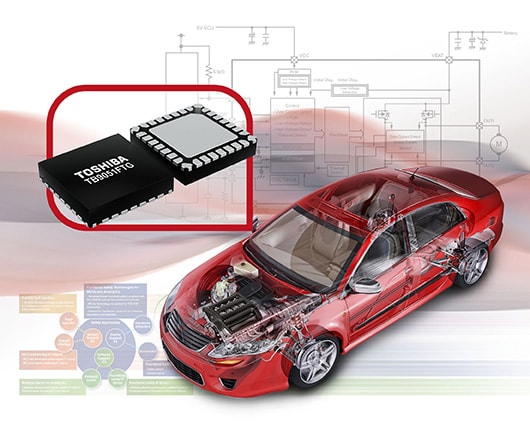- General Top
- SEMICONDUCTOR
- STORAGE
- COMPANY
-
My ToshibaSemicon
- Semiconductor Top
-
ApplicationsAutomotive
Body Electronics
xEV
In-Vehicle Infotainment
Advanced Driver-Assistance Systems (ADAS)
Chassis
IndustrialInfrastructure
BEMS/HEMS
Factory Automation
Commercial Equipment
Consumer/PersonalIoT Equipment
Healthcare
Wearable Device
Mobile
Computer Peripherals
-
ProductsAutomotive Devices
Discrete Semiconductor
Diodes
Transistors
Logic ICs
Analog Devices
Digital Devices
Wireless Devices
※
: Products list (parametric search)
Power SemiconductorsSiC Power Devices
※
: Products list (parametric search)
Isolators/Solid State RelaysPhotocouplers
Digital Isolators
Solid State Relays
Fiber Optic Transmitting Modules
※
: Products list (parametric search)
MOSFETsIGBTs/IEGTsBipolar Transistors※
: Products list (parametric search)
Diodes※
: Products list (parametric search)
MicrocontrollersMotor Driver ICsIntelligent Power ICs※
: Products list (parametric search)
Power Management ICsLinear ICs※
: Products list (parametric search)
General Purpose Logic ICsLinear Image SensorsOther Product ICsOther Product ICs
※
: Products list (parametric search)
-
Design & Development
Design & Development
Innovation Centre
At the Toshiba Innovation Centre we constantly strive to inspire you with our technologies and solutions. Discover how to place us at the heart of your innovations.
-
Knowledge
Knowledge
Highlighted Topics
Further Materials
Other
- Where To Buy
- Part Number & Keyword Search
- Cross Reference Search
- Parametric Search
- Stock Check & Purchase
This webpage doesn't work with Internet Explorer. Please use the latest version of Google Chrome, Microsoft Edge, Mozilla Firefox or Safari.
require 3 characters or more. Search for multiple part numbers fromhere.
The information presented in this cross reference is based on TOSHIBA's selection criteria and should be treated as a suggestion only. Please carefully review the latest versions of all relevant information on the TOSHIBA products, including without limitation data sheets and validate all operating parameters of the TOSHIBA products to ensure that the suggested TOSHIBA products are truly compatible with your design and application.Please note that this cross reference is based on TOSHIBA's estimate of compatibility with other manufacturers' products, based on other manufacturers' published data, at the time the data was collected.TOSHIBA is not responsible for any incorrect or incomplete information. Information is subject to change at any time without notice.
require 3 characters or more.
Satisfying Automobile Industry’s Demands for More Effective Motor Control Solutions

The prevalence of electric motors in automotive designs is increasing considerably, as a substantial proportion of modern vehicles’ functionality is migrated away from traditional mechanical implementations towards modern streamlined electronic implementations - in order to reduce weight and thereby improve fuel economy. Among the areas where electric motors are now seeing widespread deployment are in fuel/oil/water pumps, exhaust gas recirculation systems and electric power steering systems. In addition, they are providing a highly effective way by which to automate what were previously manual tasks (the adjusting of door mirrors, opening/closing of windows, operation of climate control systems, locking mechanisms, seat positioning, etc.) so that greater comfort and convenience is experienced by the vehicle’s occupants.
Fuelled by the boosted efficiency that can be derived, plus the elevated degrees of flexibility and reliability these devices offer, market analysis firm IHS estimates that during 2016, electric motor shipments specifically for automotive applications will reach a total of 3 billion units. Nevertheless there are still technical issues that need to be overcome, whether it is for DC or BLDC motor types, in relation to the supporting electronics that drives them. Among the most challenging of these are optimising the driver electronics so that bill of materials costs can be kept in check and minimal board real estate is utilised (to counter the space constraints witnessed in today’s automobile design). In addition, of course, the driver electronics must be robust enough to deal with the harsh operational environment into which it is being placed and, when implemented in critical applications, also support the functional safety standards now being mandated.
The following white paper, from Toshiba, looks at how the advent of more sophisticated driver IC technology (based on advanced mixed signal semiconductor processes) is addressing these issues. To download this document click here:

